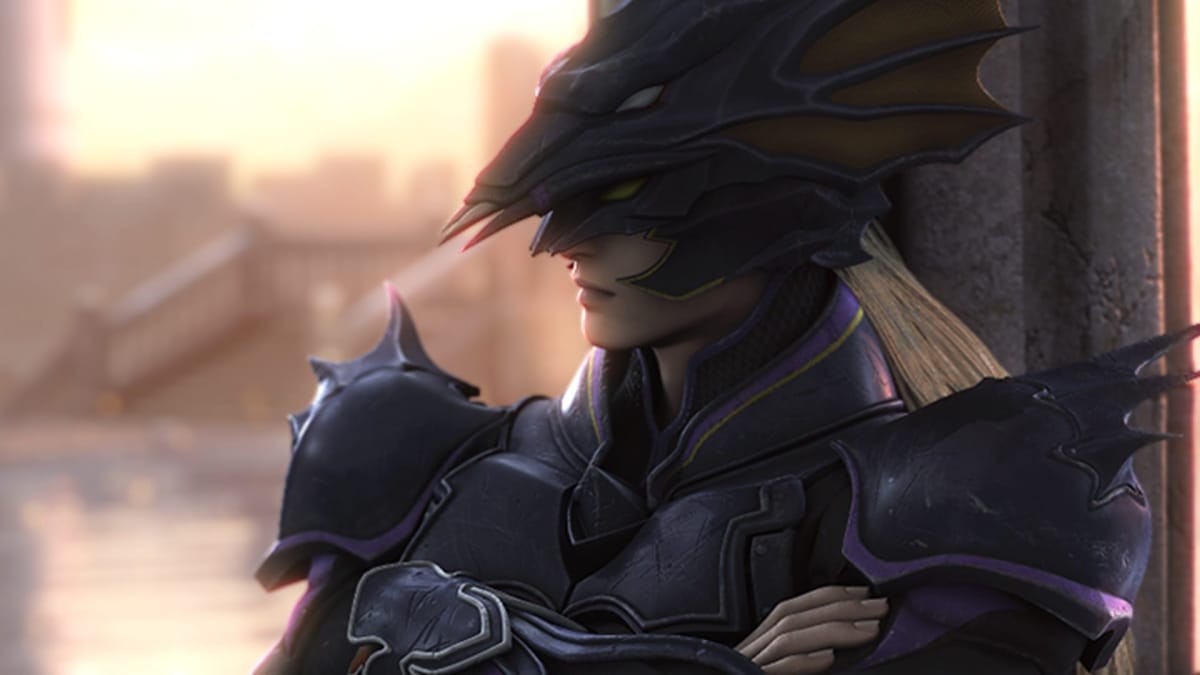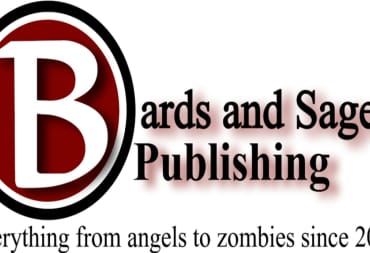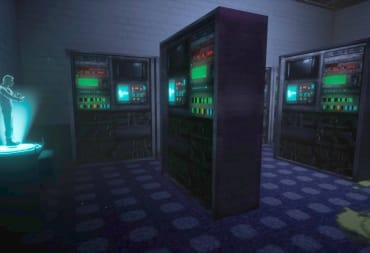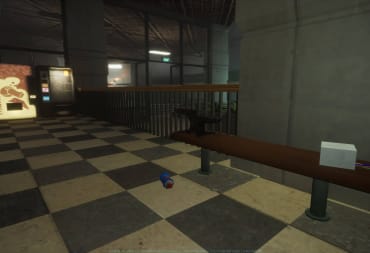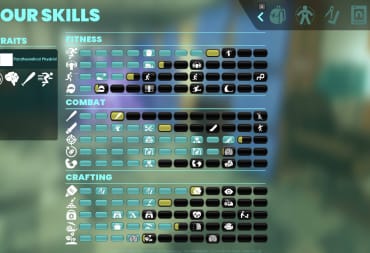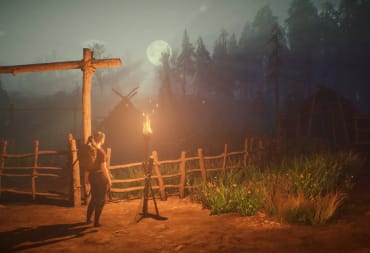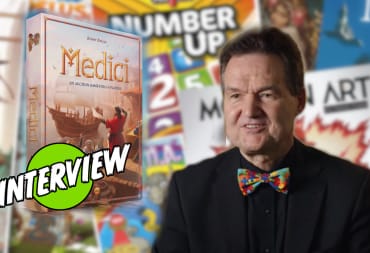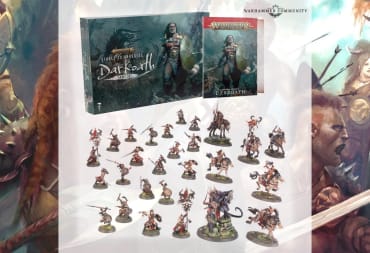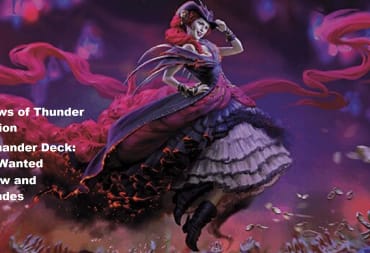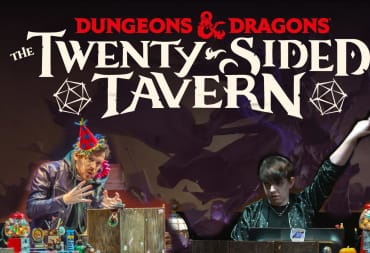Moral ambiguity is incredibly difficult to pull off in video games. It is a medium that prioritizes heroic protagonists by nature of the player’s role as them; it's always easier to shape your narrative in ‘black or white’ terms between the protagonist/antagonist dichotomy. It has only been recently that a select few games have delved into more complex characterizations, but for the longest time, such complexity was rarely seen.
Role-playing games tend to be one of the few genres that are the exception to that rule, though many fall into the trap of ‘obvious’ good and evil with no ambiguity between them. That is why one of the few exceptions to this rule comes from classic Final Fantasy, of all sources, with the character of Kain Highwind.
Kain is a playable character from Final Fantasy IV (or II if you have the SNES version). Representing the popular dragoon job in terms of mechanics—an elite warrior who specializes in spears - he is a member of the Red Wings, an elite force of soldiers under the command of Kain’s best friend, Cecil Harvey.
The Red Wings operate under the power of the kingdom of Baron and use their prowess in battle to steal several elemental crystals in his name.
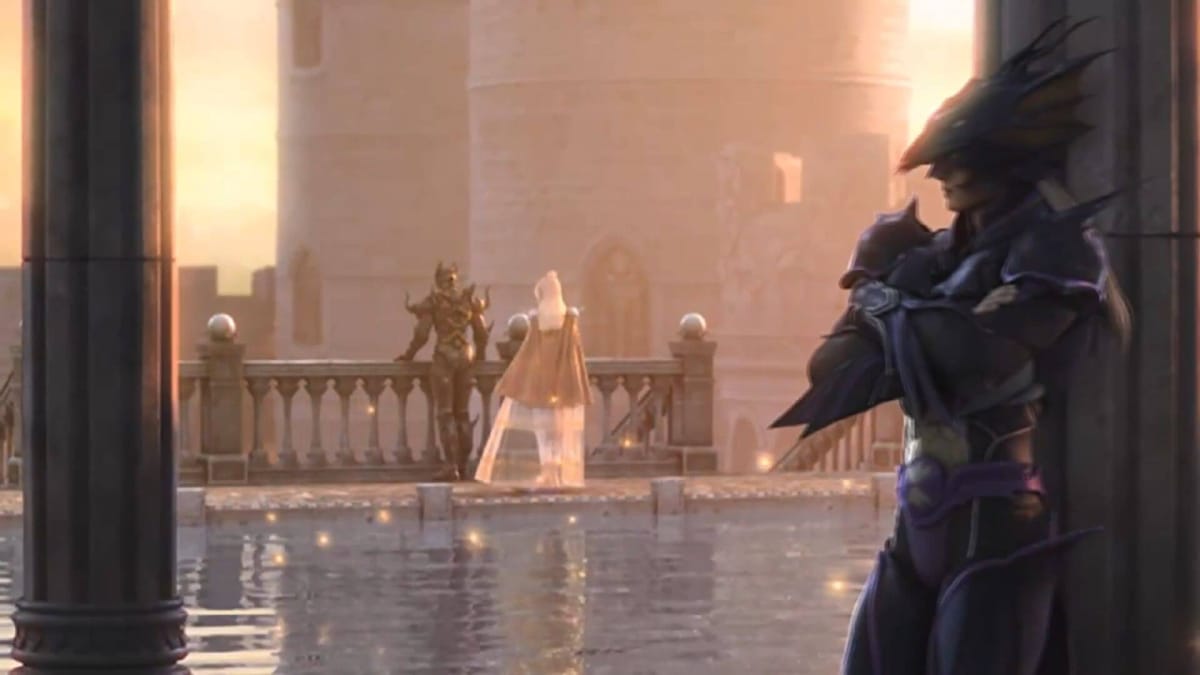
One of the defining bits of character with Kain is the relationship between him and Cecil. The two are friends, but also share a friendly rivalry throughout most of their lives; both are from affluent families in Baron, and both come from great family legacies. Kain’s father Richard was the commander of the Dragoons, while Cecil was the adopted son of the King after his parents died during his birth. This familial pressure adds cliched tension of course, but that is not the only issue between the two friends.
Like any form of drama between friends, it involves the love of another person. In this case, Final Fantasy IV did something unique by creating a love triangle between Cecil, Kain, and their childhood friend Rosa Joanna Farrel. Rosa is enamored with Cecil, who likewise returns the affections, while Kain, also in love with Rosa, is typically ignored or never receives the same adoration from her. They are still friends, but only that to Rosa, something that Kain resents deep down.
Though we would consider this a standard melodramatic trope now, the love triangle plotline was never done in gaming before with determined characters. Final Fantasy IV was one of the first RPGs, let alone video games, to include a romantic subplot with a love interest for the main character.
This was also in 1991 when deep characterization for console titles was incredibly rare. This intrigue was unique at its release and offers great subtext to the actions of characters like Kain.
Now unlike other games in the Final Fantasy mythos that have love triangles involved, here it is the impetus of the actions of a single character. Kain’s actions are ultimately out of human weakness, selfishness, and greed. He already harbors a deep grudge against Cecil, mostly due to his relationship with Rosa. Their friendly rivalry, compounded by the social pressures of their positions in the Red Wings, makes his subconscious feelings conflicted towards his friend.
In the beginning of the game Cecil, a dark knight, begins to question the motivations of his king after the theft of these elemental crystals. In return, Cecil is relieved of his command but is sent on a mission to the village of Mist. This turns into a trap that separates Kain from Cecil. At this point, Kain begins to be manipulated by the dark wizard Golbez, who controls his mind and makes him do his bidding. His first task is to steal a crystal from Fabul, and in the process attempts to kill Cecil and capture Rosa, with Golbez’s help.
The reason for Kain’s betrayal is not a promise by Golbez for some unforeseen power, but rather simple mind manipulation. Golbez sensed that Kain harbored much hate for his friend, and he used this to his advantage several times; most notably the capture of Rosa and the Fabul crystal and the attempted prisoner exchange at the Tower of Zot. It is in the tower where Kain suggests they trade Rosa for the final crystal in Cecil’s control.
Of course, Cecil is double-crossed, but thanks to the sacrifice of the wizard Tellah, Golbez is weakened enough to allow Kain control of his mind again.
Now throughout the game, Kain goes in and out of the control of Golbez, and most of the time he does not understand why. What makes Kain unique is how he even admits that he never attempts to fight the darker thoughts he has when under Golbez’s control. Instead, he is passive towards them, almost complacent in the fact that several times he was under Golbez’s control, he was able to be close to his love Rosa.
This gives the mind control aspect of Kain’s seeming betrayal a bit of personal context. Kain does not seem to fight his darker desires, instead willingly accepting them because of the rewards he receives. His love for Rosa clouds his morality, fulfilling a personal desire for himself and willingly choosing the manipulation to enact that desire.
It is interesting to note that the cut content from the original SNES release of the game would explore this “dark half” further. Thankfully, the cut content, known as the Lunar Dungeons, was restored in the Game Boy Advance re-release of the game, and here we can see Kain perform his solo quest during his trial. The trial entails him and Cecil teaming up to find a murderer in the village of Baron, where the two grew up together.
The murderer, curiously enough, is killing people with a spear by jumping on them at night. Since the murderer details what Kain’s job class is, he is eventually pinned for it. He is later released, and the next night follows Cecil to a mysterious teleporter that sends him to a glass-covered room. The room has Rosa tied up and Cecil lying on the floor, near death. It is here Kain confronts the true murderer: himself.
The reveal of Kain’s dark half as the culprit is not necessarily shocking, but it is the motive of Kain’s dark half that sells the side quest. Claiming that these are the true desires of what Kain really wants, Kain should just kill Cecil there and give in to his jealousy of him. The player is then given the choice of killing Cecil or fighting your dark half, the Lunar Bahamut in disguise.
Of course, giving into the dark half is left somewhat empty, a failure of the quest in terms of the game's mechanics, while fighting the Lunar Bahamut rewards you with Abel’s Spear, the best weapon in the game for the Dragoon. Either choice, however, leaves a harrowing effect on Kain, so far as to reply to his allies later that nothing happened in his trial when asked about it regardless of the choice made.
Kain, of course, is a symbolic name from the biblical story of Cain and Abel, where Cain would betray and kill his brother out of jealousy over his perceived favoritism from God. Cain became a pariah of sorts, the first “murderer” in biblical terminology who fell from favor due to his jealousy. Kain does have parallels to his biblical namesake, namely betraying his friends out of manipulation and being tempted to kill Cecil numerous times in the adventure.
Yet, Kain’s ultimate role is one that subverts the expectations of such a betrayal.
In most games, Kain’s betrayal and eventual defeat would be a given; everything lines up with it, right down to his namesake. Yet, Final Fantasy IV subverts this by doing something rarer: a forgiveness for the character. After Golbez’s mind control is snapped, Kain leaves Golbez and joins Cecil (with much trepidation) to rescue Rosa, whom he kidnapped previously.
Once Rosa is saved, Kain does something different, publicly declaring his love for Rosa while apologizing for his actions. Rosa accepts this apology, asking Kain to join the party once more.
To have a betrayal in an RPG is standard storytelling. To have forgiveness is exceptional storytelling. Ultimately, Kain publicly letting go of his feelings, instead of suppressing them out of duty or politeness, is what sets him free—not just from control, but of his desires and his “darker half.” His feelings are justified by Rosa’s forgiveness, and he is content knowing that she forgives his actions.
Accepting My Inner Self
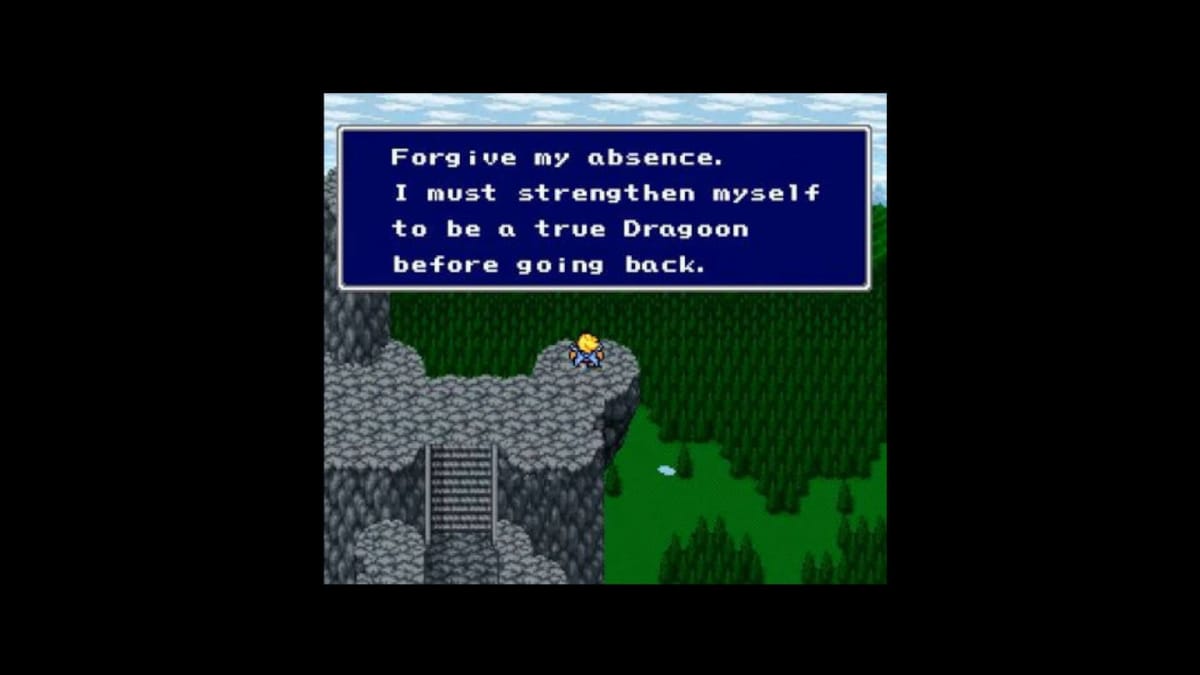
The ending of Final Fantasy IV has Cecil and Rosa getting married after Golbez is defeated, and all the surviving party members attend the wedding and receive happy endings. Kain, however, refuses to attend the wedding and instead vows to make himself a better person over the pain he caused against Rosa and Cecil.
This again shows the self-awareness of his own inner demons against his friend. He knows he will not be the love of Rosa’s life, but he also knows that his feelings will never go away and must better himself to control them.
Much of this is explored in the relatively obscure sequel to Final Fantasy IV, titled The After Years. A WiiWare title, of all things - it explores the lives of all the main characters years later. For Kain, his journeys of self-exile see him once again fighting his darker half, which he fails to destroy. Kain’s dark half escapes, wreaking havoc along the land, with Kain almost selfishly abandoning his name as he tracks down his evil side.
For Kain, The After Years is all about coming to terms with his dark side. Again, this is another cliché we often see, but it is refreshing because of the symbolic representation of what his dark side represents. It is something that Kain cannot defeat in combat, or ignore. Ultimately, it is part of him. The climax of his story is not Kain killing his dark half but absorbing it into himself.
Symbolically this gives Kain strength in a way that is rewarded both narratively and in the game. Kain showcases how he can overcome his darker side and is granted the power of the Holy Dragoon. Later, he comes to terms with his dark desires to rejoin Cecil, Rosa, and the rest of his friends.
Kain ends The After Years in control of his emotions. He has learned to not give into his darker desires fully yet does not reject them outright. Instead, he comes to terms with the fact that they are a part of him. This is symbolic in how he views Cecil ultimately; Kain is his friend, his confidant, but still desires to defeat him one day. His rival and best friend, the man whom he has come to terms with his jealousy.
Kain is a complex hero who shuns the archetype of good and evil. He is both a tragic hero and a redemptive villain at the same time. His numerous turns against his friend Cecil, his feelings for Rosa, his acknowledgment of this personified dark half, and the constant struggle against it; make Kain a complex source of what it means to be good, and the struggle many have with their own emotions and desires. Kain is given dimensions due to this struggle and is a prime example of why that struggle is such a rich vein of narrative complexity to provide deeper characterization for a character that would normally be an unambiguous hero.
This post was originally published in 2020 as a part of our Character Select series. It's been republished to have better formatting.
Have a tip, or want to point out something we missed? Leave a Comment or e-mail us at tips@techraptor.net
